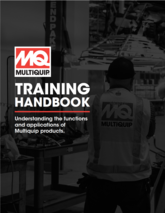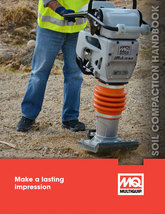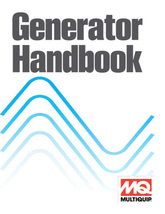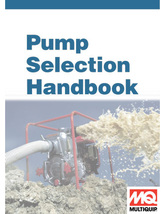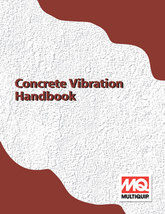-
Learning Resource Center
-
Welcome to the UMQ Learning Resource Center!
Expand your application and technical knowledge of Multiquip products with our growing library of videos and training content. Check back for updates!
Looking to learn more?
Is your goal to expand your application knowledge or gain service and maintenance insights? Our product experts are here to help!
Take your equipment knowledge to the next level by sharing details of your training needs. Click the link to get started!
Training Request Form
Please note that filling out the form does not guarantee enrollment.Interested in learning more about our different product lines? Click the link above to be contacted.
-
Jump To:
-
Videos
The videos below were created to provide an understanding of some common equipment applications and assistance in selecting the right tool for your project.
-
-
-
-
-
MQ Whiteman LD6 Ride-On Power Trowel
Overview of the MQ Whiteman LD6 Ride-On Hydrostatic Power Trowel -
-
-
MQ Product Training Handbook
The MQ Product Training Handbook provides overviews of selected product lines and is intended as a learning supplement for Multiquip dealer training.
Soil Compaction Handbook
Our Soil Compaction Handbook guides the user through the reasons for compacting soil, the types of compaction effort used, and covers Multiquip's compcation equipment line of rammers, plate compactors, and rollers.
Generator Handbook
Our generator handbook provides a basic education in electrical theory and generator operation, including formula for calculating power output and how to use that information to size a generator for your needs. Appendix tables provide starting requirements for electric motors, common extension cord gauge sizes, and typical power requirements for common construction applications
Dewatering Pump Selection Handbook
Our Dewatering Pump Selection Handbook teaches the user to understanding common Dewatering Pump designs, Pumping Theory, and the principles behind pumping equipment selection
Concrete Vibrators Handbook
Our Concrete Vibrator handbook explains the basics of concrete, the purpose of vibrating curing concrete, and the different types of vibrator machines available.
-
Generator Short-Circuit Current
This short paper was written as quick reference to calculating available short-circuit current within a temporary electrical system when the primary power source is a generator. The paper also explains the behavioral characteristics of a generator when a short-circuit occurs and explain the different reactance values assigned to the generators for the purpose of calculating short-circuit current based on time.
Generator Motor Starting
This short paper will address motor basics, starting current, the impact high transient current has on a generator and the important role transient reactance plays in estimating the generator size in the absence of generator performance data.
Grounding & Bonding; Temporary Power Generation and Electrical Distribution
"Grounding & Bonding of an effective ground fault current path is the backbone of electrical safety and shock prevention in temporary power generation and electrical distribution system installations”
-
Technical Support Contacts
Monday - Friday 5AM to 5PM (PST) -
Connect with us

- News, Info, & Events
- Product & General News
- Tradeshow Schedule
- Careers
- About Multiquip









